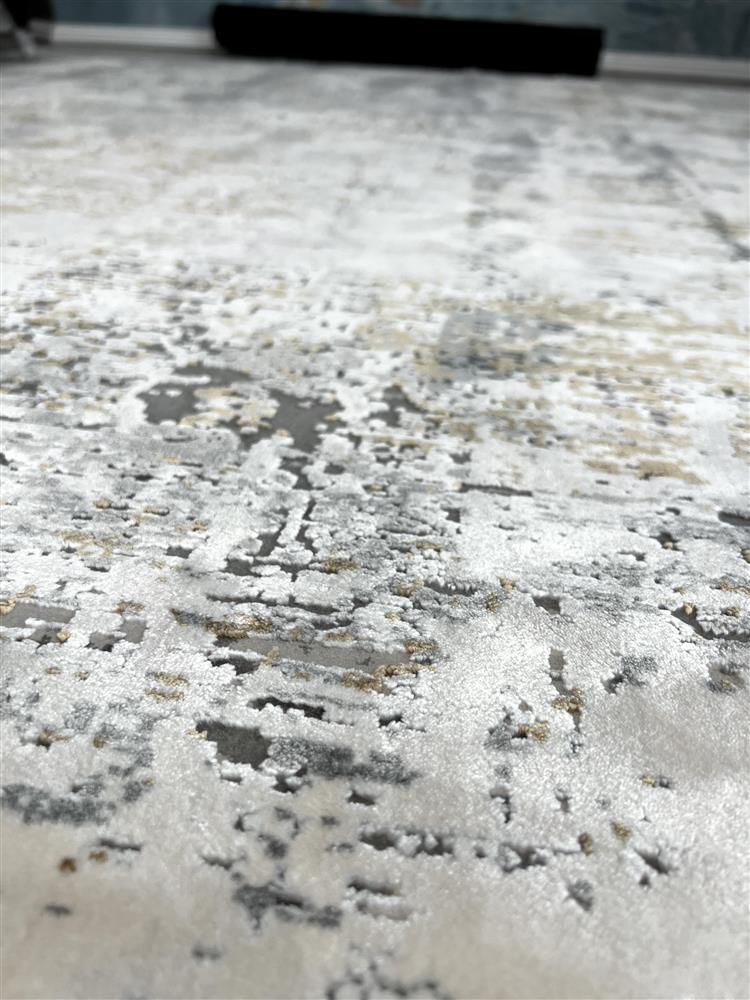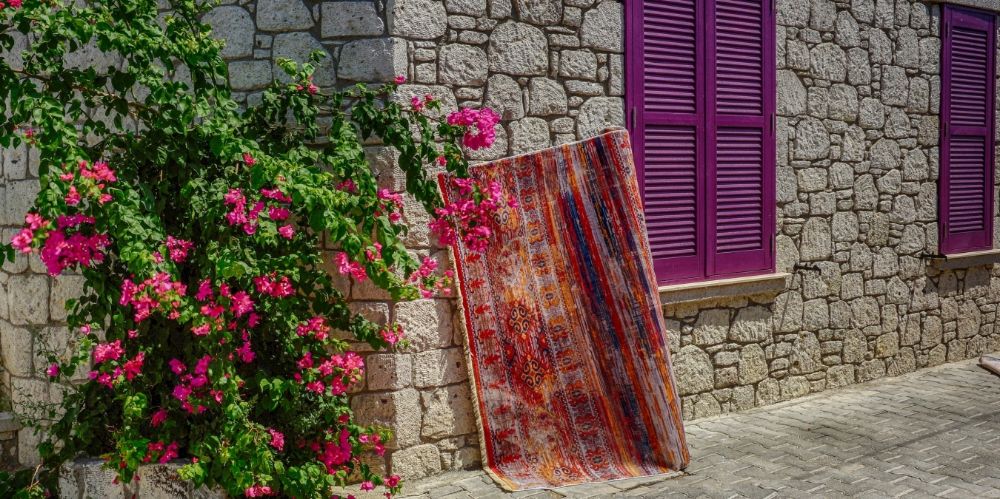Embarking on a room-decorating journey can feel like an endless quest for the perfect furnishings. Amidst the multitude of items to consider, one particular gem stands out—the humble rug. But wait, it's not just another item to check off your shopping list. In fact, it serves as the very foundation of your room's decor, a crucial element for creating a cozy and harmonious home environment. Think about it: rugs not only dampen noises but also add a touch of warmth to your floors. They occupy a significant visual space in any room, making them a paramount design choice. So, when it comes to enhancing your living space, don't underestimate the power of a well-chosen rug—it's a decision that truly sets the tone and elevates the entire ambiance.
Imagine a decorating scenario where you embark on a journey to find the perfect rug—a true gem that sets the tone for your entire space. In an ideal world, this rug would be the very first item you acquire, allowing you to build the rest of the room around its captivating colors and distinctive shape. However, before diving into the realm of rug shopping, it's essential to consider a multitude of factors, especially since these stylish floor coverings can often come with a hefty price tag. Fear not! Allow this comprehensive buying guide to be your trusted companion, leading you through the maze of options until you discover the rug that not only anchors your space but also fulfills your functional needs. With its expert advice, you'll be well-equipped to make an informed decision and bring your room to life with the high quality rug as its crowning glory.
UNLEASH THE POWER OF MATERIAL - What is the Difference Between a Cheap Rug and an Expensive Rug?
When it comes to rug shopping, one crucial aspect that often gets overlooked is the material it's made from. With a myriad of options available, ranging from natural fibers to synthetic marvels, it's essential to delve into this realm before making your purchase. After all, the material you choose impacts the feel, price, durability, and ease of cleaning. So, let's embark on a fascinating journey through the diverse materials you'll encounter in the market, keeping in mind your space and lifestyle preferences.
Wool Rugs
Enter the realm of designer-favorite natural materials with wool rugs. They're not just irresistibly cozy but also exceptionally durable and naturally fire-retardant. While many believe that lanolin enriches wool, the truth is that washing and dyeing processes remove this naturally occurring oil. However, fear not, as wool rugs still possess natural stain-repellent properties, making them a sensible choice. Keep in mind that wool rugs are not immune to carpet moths, so vigilance is necessary. Nevertheless, their flame-retardant nature and low burning rate make them a safe option for your home.

Sisal and Jute Rugs
If you're seeking earthy beauty with a touch of bohemian flair, look no further than sisal and jute rugs. Their perfectly imperfect texture adds a unique charm to any room, and they're particularly great for high-traffic areas due to their durability. However, beware of spills, as sisal rugs tend to absorb liquids and are prone to staining. Additionally, while jute rugs provide a texture-rich visual element, they may not be the most comfortable underfoot. Shedding is also common with these materials, requiring regular vacuuming and delicate maintenance. Remember, jute rugs should never get wet, as this can lead to browning and damage.
Silk Rugs
For an infusion of luxury, silk rugs reign supreme. Boasting a soft and shiny allure, they're perfect for intricate designs. However, keep in mind that silk rugs require special care and are not the easiest to clean. Ideal for formal living rooms or master bedrooms, they should be placed away from areas prone to spills. Be prepared, though, as silk rugs tend to be the most expensive option on the market.
Cotton Rugs
If affordability and easy maintenance are top priorities, cotton rugs are your go-to choice. Soft and budget-friendly, they also offer good stain resistance. However, it's worth noting that cotton rugs may not hold up as well over time compared to other natural materials, and spills should still be promptly addressed. To enhance flame resistance, flame-retardant chemical additives can be applied.

Polyester Rugs
When it comes to synthetic options, polyester rugs take the crown. They not only wear well but also boast a soft touch, especially when opting for a dense pile. Polyester rugs are moisture, stain, and abrasion-resistant, making them easy to clean and maintain their vibrant colors. While cotton blends with polyester offer durability at a moderate price point, polyester remains the most versatile fiber for rugs. Rest assured, polyester rugs are safe for use, hypoallergenic, and do not release harmful chemicals or gases into the air.
Polypropylene Rugs
If durability is paramount, look no further than polypropylene rugs. These synthetic wonders excel in high-traffic areas and are resistant to dirt, fading from sunlight, and exposure to the elements. Often used in outdoor rugs, polypropylene is known for its UV, mildew, and stain resistance, making it a practical and affordable choice.
Acrylic Rugs
Acrylic rugs, crafted from synthetic polyacrylic fibers, offer durability and exceptional stain resistance. They are a cost-effective alternative to wool, featuring vibrant hues and the ability to withstand direct sunlight. However, acrylic rugs are less durable than polyester or wool options, making them less suitable for high-traffic areas or households with pets and children. They may also shed initially but will eventually subside. Keep in mind that polypropylene and acrylic fibers have only moderate flame-retardant properties.
Viscose or Bamboo Silk
If you're seeking glamour and a soft underfoot sensation, viscose blends are the answer. While typically used as an affordable substitute for silk, these rugs should be placed in low-traffic areas and shielded from moisture. Viscose rugs often contain a blend of synthetic or natural materials, adding an accent fiber to enhance their appeal.
Modal Silk
Made from natural materials such as beech tree pulp or bamboo, modal and bamboo rugs offer exceptional breathability and absorbency. Highly suitable for sensitive skin, these fabrics possess antibacterial and hypoallergenic properties. Modal rugs boast environmental friendliness in their manufacturing process, making them a superior choice compared to bamboo. However, both modal and bamboo rugs share the same feel, weight, and durability.
As you navigate the vast world of rug materials, remember that each option comes with its own set of advantages and considerations. Armed with this knowledge, you can confidently select the perfect rug that not only elevates your space aesthetically but also aligns with your practical needs. Let the magic of materials guide you towards creating a truly remarkable and inviting environment within your home.
A GUIDE TO RUG CONSTRUCTION - WHAT TO LOOK FOR WHEN BUYING A RUG?
Hand-Knotted Rugs - The Enchanting World of Knot Counts!
When it comes to hand-knotted or machine-woven rugs, the words "fine" and "high-quality" are like secret codes that reveal the rug's craftsmanship. It's all about the knot count!
Imagine this: skilled artisans painstakingly tying millions of knots one by one on a loom, using a cotton or wool warp and weft. The result? A beautifully woven rug that's a work of art. But what sets the great ones apart is the density of those knots. The closer they are to each other within every square inch, the higher the rug's knot count—and that's where the magic happens.
The origin of hand-knotting rugs can be traced back to Persia and Turkey, and this traditional technique is still practiced today. One key aspect that determines the quality of a hand-knotted rug is the number of knots per square inch. Generally, a higher knot count indicates superior quality. The knot count can range from around 40 knots per square inch to as high as 1,200 knots, with more knots typically resulting in a finer and more intricate design.
The construction method of a rug has a significant impact on both its price and quality. Hand-knotted rugs are widely regarded as the pinnacle of rug construction. They are meticulously crafted by skilled artisans who tie each individual knot by hand. Hand-knotted rugs are known for their exceptional durability and attention to detail, making them capable of lasting for generations.

Machine-Woven Rugs - Your Affordable Path to Quality
If hand-knotted rugs are beyond your budget, the next best option in terms of quality is machine-woven rugs, also known as machine-made or machine-knotted rugs. These rugs are created using a similar technique of weaving knots with weft and warp, but the process is mechanized, not hand-knotted. Machine-made rugs can be quite strong and offer a good balance between quality and affordability.
Understanding the construction methods of rugs can help you make informed decisions when purchasing one. Hand-knotted rugs offer unparalleled craftsmanship and durability, while machine-woven rugs provide a balance of quality and affordability. Machine-made rugs, although not last generations, can still be visually appealing options at a lower price point.
Turkey is the hotspot for these fantastic creations! Within the realm of machine-woven rugs, there's a captivating range awaiting your discovery. From lower quality options to exquisite Turkish masterpieces, the choices are vast. So, whether you're seeking a budget-friendly gem or aiming for the pinnacle of sophistication, the world of Turkish machine-made rugs has it all!
Hand-Tufted & Hand-Loomed Rugs - The Tale of Hand-Tufted vs. Machine-Made Marvels
On the other hand, hand-tufted rugs, although labeled as handmade, are a combination of hand and machine-made methods. They are created by punching strands of wool or other fibers into a canvas stretched on a frame. Hand-tufted rugs are often less expensive than hand-knotted or fine quality machine-woven rugs, but they may not possess the same level of durability or longevity. You can distinguish a hand-tufted rug by checking the underside—if the pattern is visible on the reverse side, it is likely hand-knotted, whereas if the reverse is covered in a backing material, it is hand-tufted.
The hand-tufted rugs are known to be thicker and coarser under the skin and they are heavier in comparison.
Allow me to share some valuable insights when it comes to purchasing rugs. In this realm, I have a cardinal rule for you: exercise caution when considering hand-tufted rugs. Should your budget not permit the acquisition of a lavish hand-knotted rug, fret not! I've got a much better alternative in mind: a magnificent machine-made rug.
Now, let me elucidate the characteristics of hand-tufted rugs. These rugs are assembled using an adhesive latex backing, which may present challenges for individuals with allergies. However, their defining feature is the absence of intricate knots, depriving them of captivating patterns on the reverse side. Instead, a resilient canvas material conceals the backing, providing structural integrity.
In India, wool that fails to meet the rigorous standards set for hand-knotted rugs is repurposed for the production of these lower-quality or recycled wool rugs. Take heed when perusing online rug merchants, as terms like "hand-loomed" or "tufted" may accompany exorbitant price tags. Yet, I must caution you against succumbing to their allure.
Regrettably, tufted rugs simply cannot rival the enduring resilience exhibited by their hand-knotted or machine-woven counterparts. Apply moderate pressure with your thumbnail upon the front wool fibers, and lo and behold, they may disintegrate before your eyes. Furthermore, their texture tends to be somewhat coarse, devoid of the soft and inviting tactile experience one seeks in a rug.
Thus, my esteemed companion, exercise prudence and discernment. Tufted rugs, particularly when subjected to heavy foot traffic, will invariably succumb to wear and tear. I implore you to heed my counsel and select a rug that combines resplendent aesthetics with enduring durability.

HOW TO MAKE SURE YOU ARE BUYING A QUALITY RUG - Unveiling the Secrets of Rug Shopping: Why Seeing is Believing!
When it comes to getting yourself a top-notch rug, here's a tip: try to buy it in person. Trust me, it's hard to gauge the true quality of a fine rug online without seeing, touching, and even giving it a little squeeze to test its density. Sometimes, you need to flip that rug over and check out the backside too. Take a look at how tight and neatly woven it is, and compare those knot counts like a pro.
Now, here's a little secret. A good-quality rug won't go shedding fibers all over the place when you run your hand on it. And, we don't want any funky rubbery or unpleasant smells, right? The real deal should feel soft and oh-so-cozy underfoot, giving you that warm and luxurious vibe.>
Sure, those rug pics on your phone or computer screen might look mighty fine, but if you want a rug that'll stand the test of time and make you feel like you're living in the lap of luxury, you need to hit up your local rug store. There's nothing like experiencing the real deal in person and finding that perfect rug to complete your space. So, go on, embrace the journey, and treat yourself to a rug that'll have you grinning from ear to ear every time you step on it.

